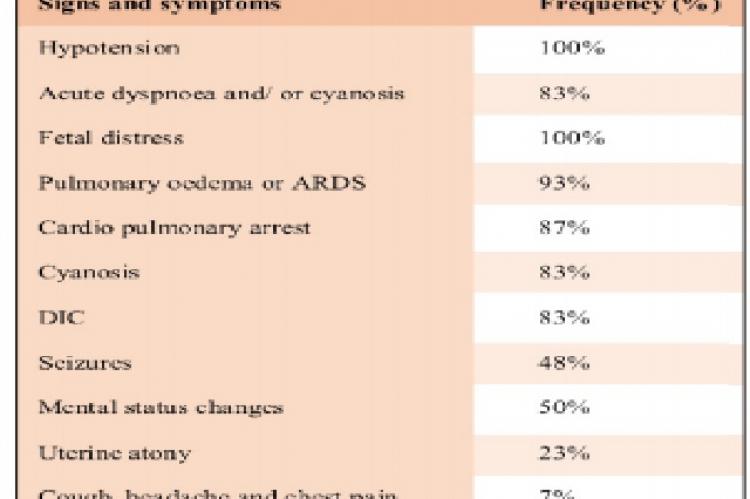Entry of amniotic fluid into the maternal circulation leads to dramatic sequel of clinical events, characteristically referred to as amniotic fluid embolism. It is the fifth most common cause of maternal mortality in the world. It's onset can neither be predicted nor prevented. First described in 1941, approximate incidence is 1 in every 20,646 deliveries, exact pathophysiology is still unknown. Some authors have proposed the term anaphylactoid syndrome of pregnancy. In a short span of weeks we have encountered 3 such cases. First case developed breathlessness and cyanosis within 5 min of rupture of membranes following misoprostol induced labour. Second case presented with breathlessness and progressed to DIC following outlet forceps delivery. Third case presented with breathlessness following rupture of membranes. All the 3 patients could not be saved inspite of all resuscitative measures. No definitive clinical or laboratory test is available for its diagnosis. Criteria for diagnosis of amniotic fluid embolism as per Clark's national registry are cardiac arrest, dyspnoea and cyanosis, coagulopathy, onset during labour or C-section or within 30 min post partum and absence of other significant pathology causing such clinical features. A team approach among obstetrician, anaesthesiologist and intensivist is necessary for successful outcome. Despite early intervention maternal and fetal mortality remains high.
View:
- PDF (576.69 KB)


